
Animal
09:36, 24-Apr-2019
Northern white rhinos might be saved by its southern cousin
Updated
11:40, 24-Apr-2019
By Zhao Ying

The endangered northern white rhinoceros can be rescued by using the genes of less threatened southern rhinoceros to create embryos, according to a study conducted by researchers from Cardiff University and the University of Venda.
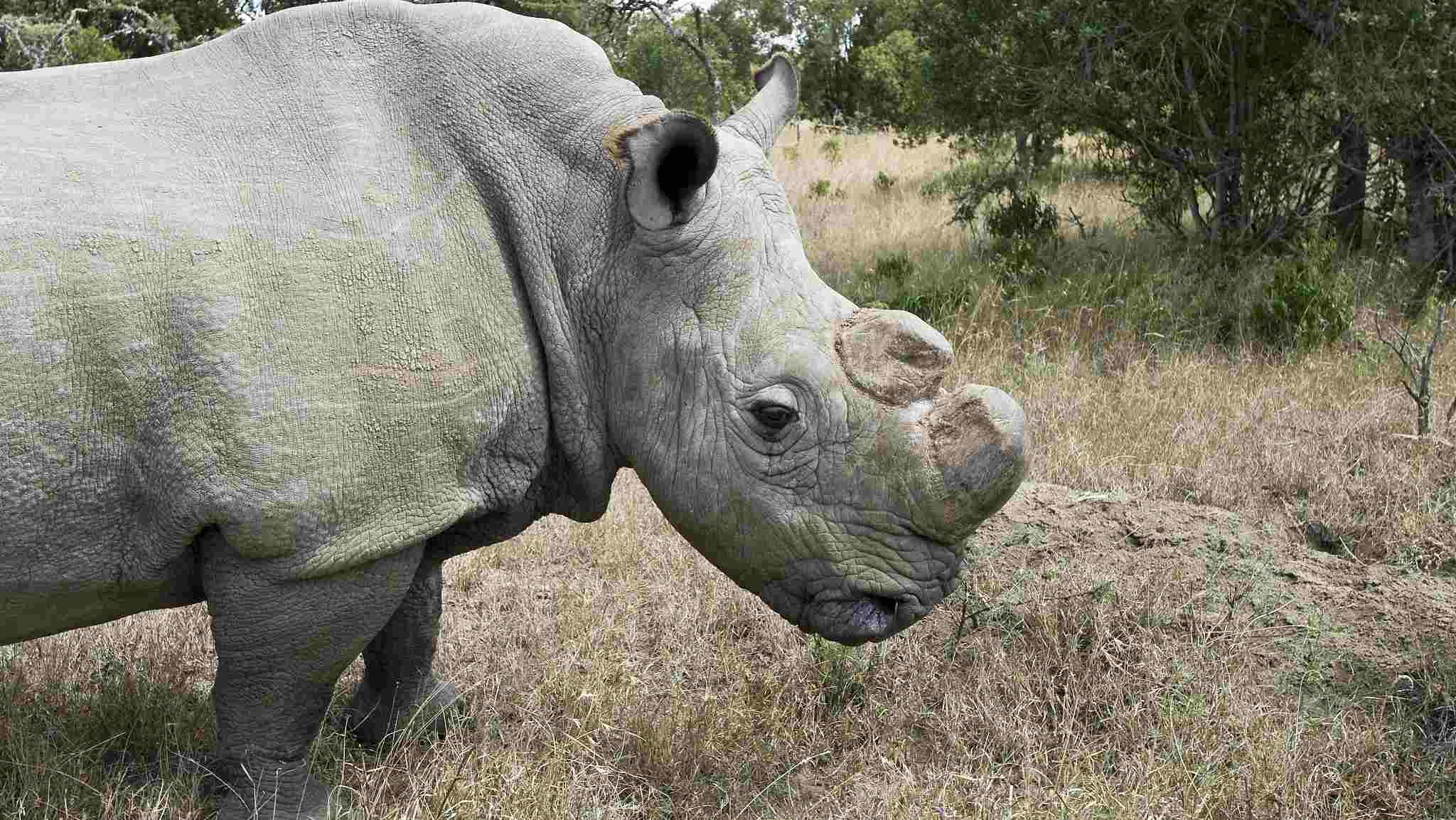
Northern white rhinoceros being rehabilitated back in the wild at Ol Pejeta Conservancy in Kenya. /VCG Photo
Northern white rhinoceros being rehabilitated back in the wild at Ol Pejeta Conservancy in Kenya. /VCG Photo
As one of the few large animals to have made it through the last ice age, white rhinoceros are the second largest mammals after the elephant. Despite their gigantic figures, they feed solely on short grasses and primarily live in grassy savanna and woodlands.
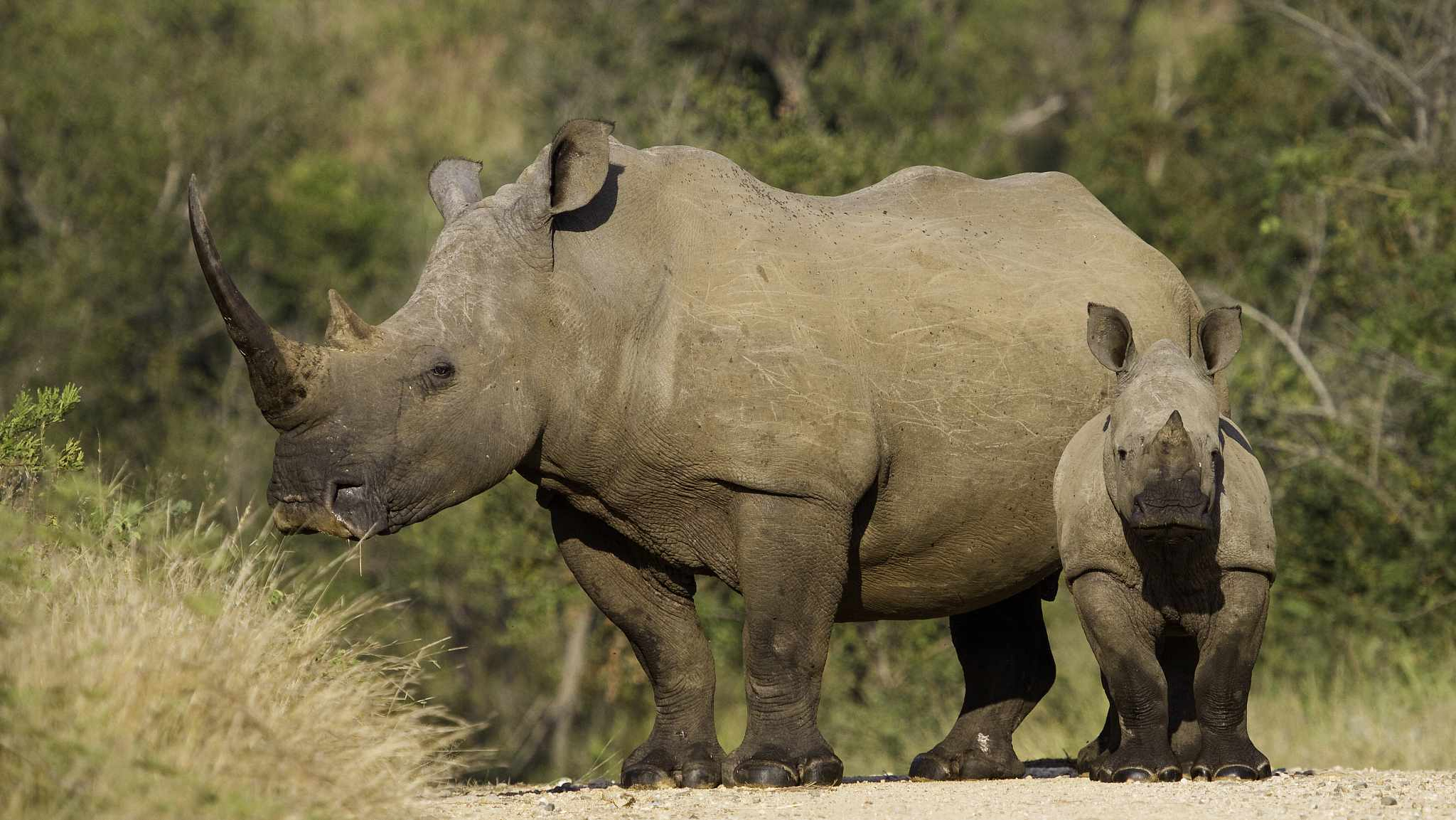
A female white rhino and its calf standing side by side on the road in the Kruger National Park in South Africa. /VCG Photo
A female white rhino and its calf standing side by side on the road in the Kruger National Park in South Africa. /VCG Photo
White rhinoceros in Africa are mainly divided into northern and southern white rhinos. Although they were separated one million years ago and are genetically distinct subspecies, they share genes during cold and arid periods around 14,000 years ago.
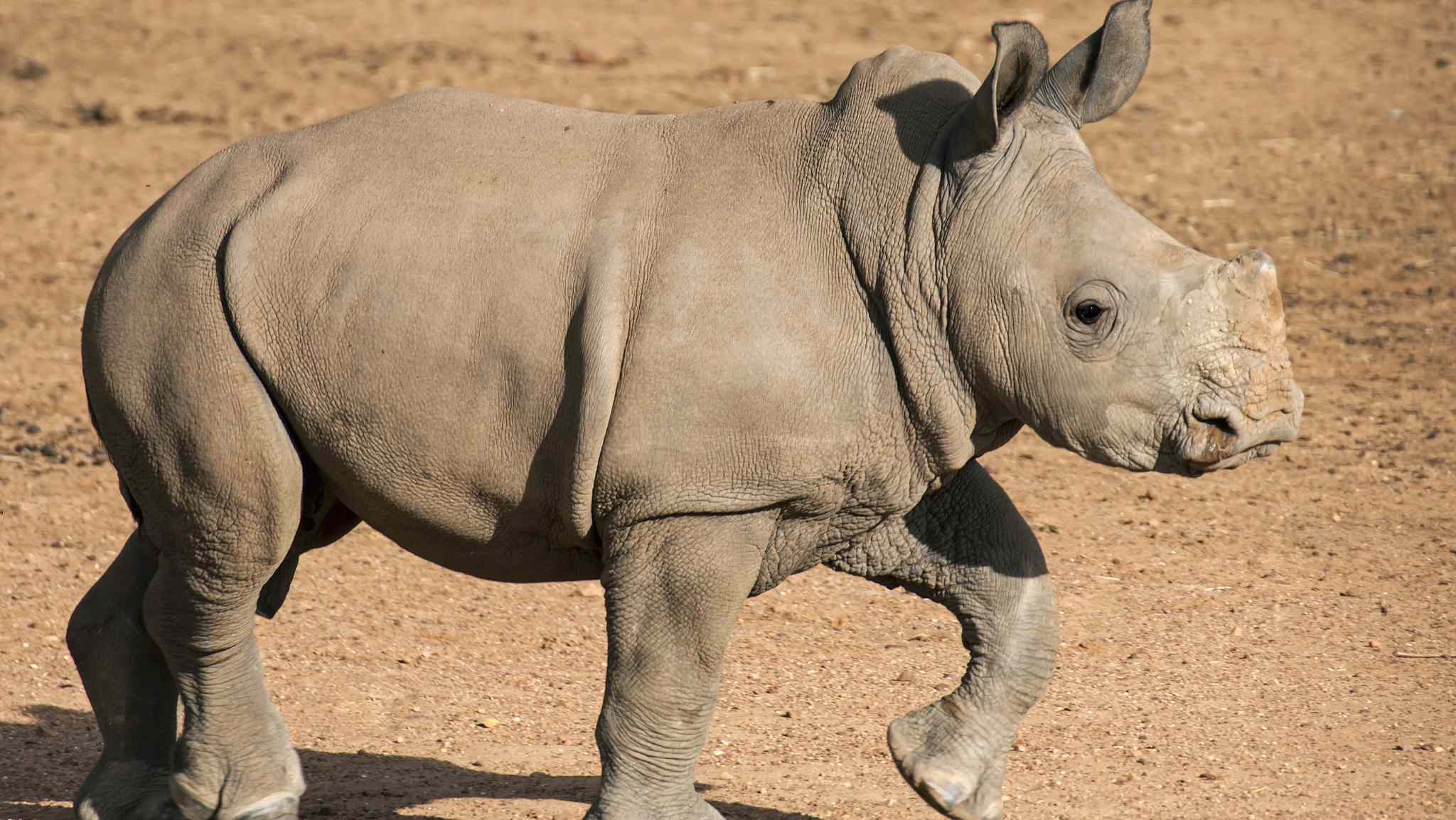
Close-up view of a Southern White Rhinoceros calf walking on the arid ground. /VCG Photo
Close-up view of a Southern White Rhinoceros calf walking on the arid ground. /VCG Photo
In March 2018, Sudan, the world's last male northern white rhino, died. Researchers have saved some of Sudan's genetic material in the hope of artificially inseminating female northern white rhinos or using southern white females for in-vitro fertilization. There are currently successful embryo transfers in a different rhino species.
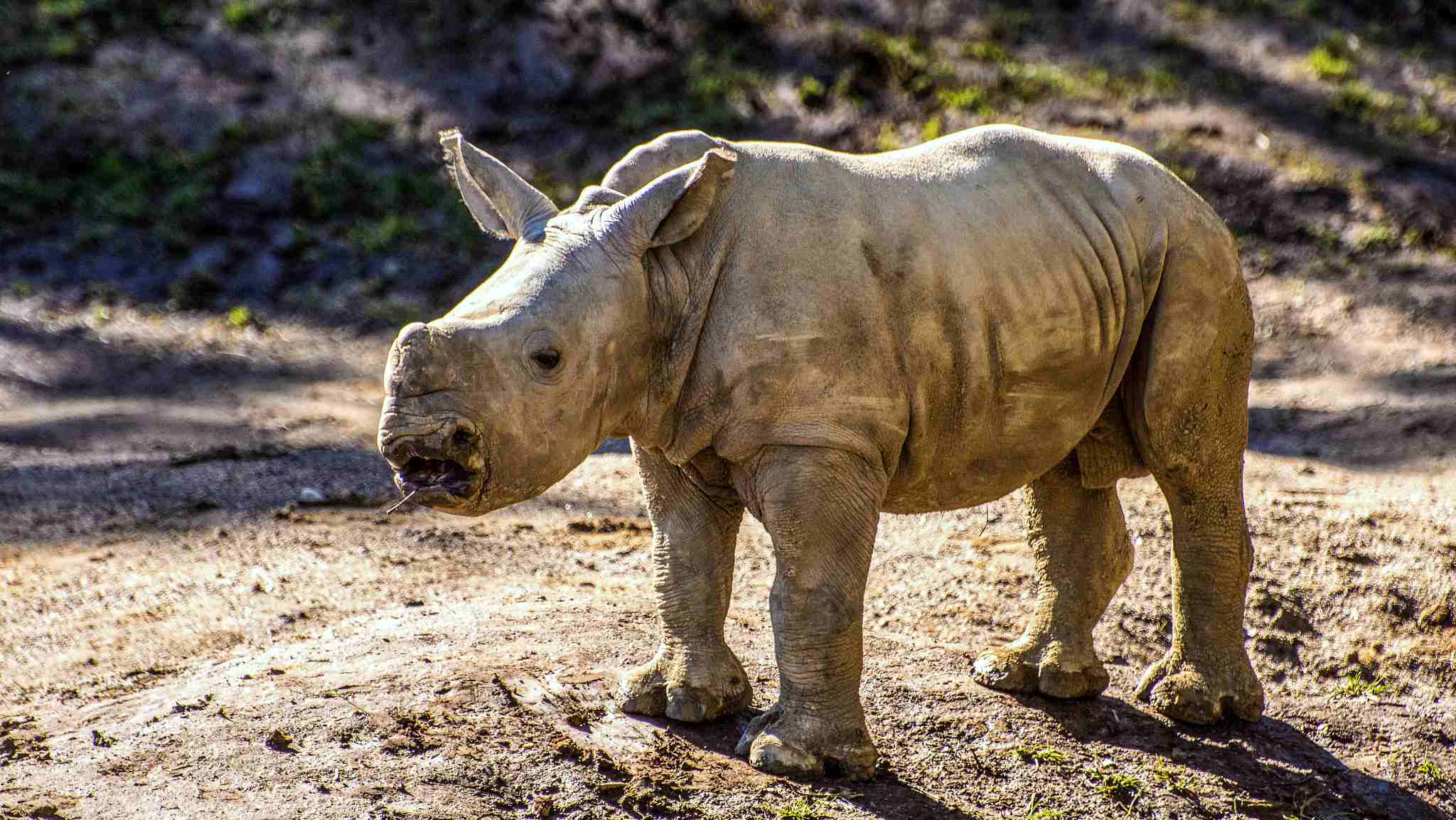
Southern white rhinoceros calf. /VCG Photo
Southern white rhinoceros calf. /VCG Photo
Back in 1960, there were more than 2,000 living northern white rhinos while the population of southern white rhinos was recovering from its sharp decline in the late nineteenth century. The northern population decreased rapidly since the 1970s due to poaching for their horns.
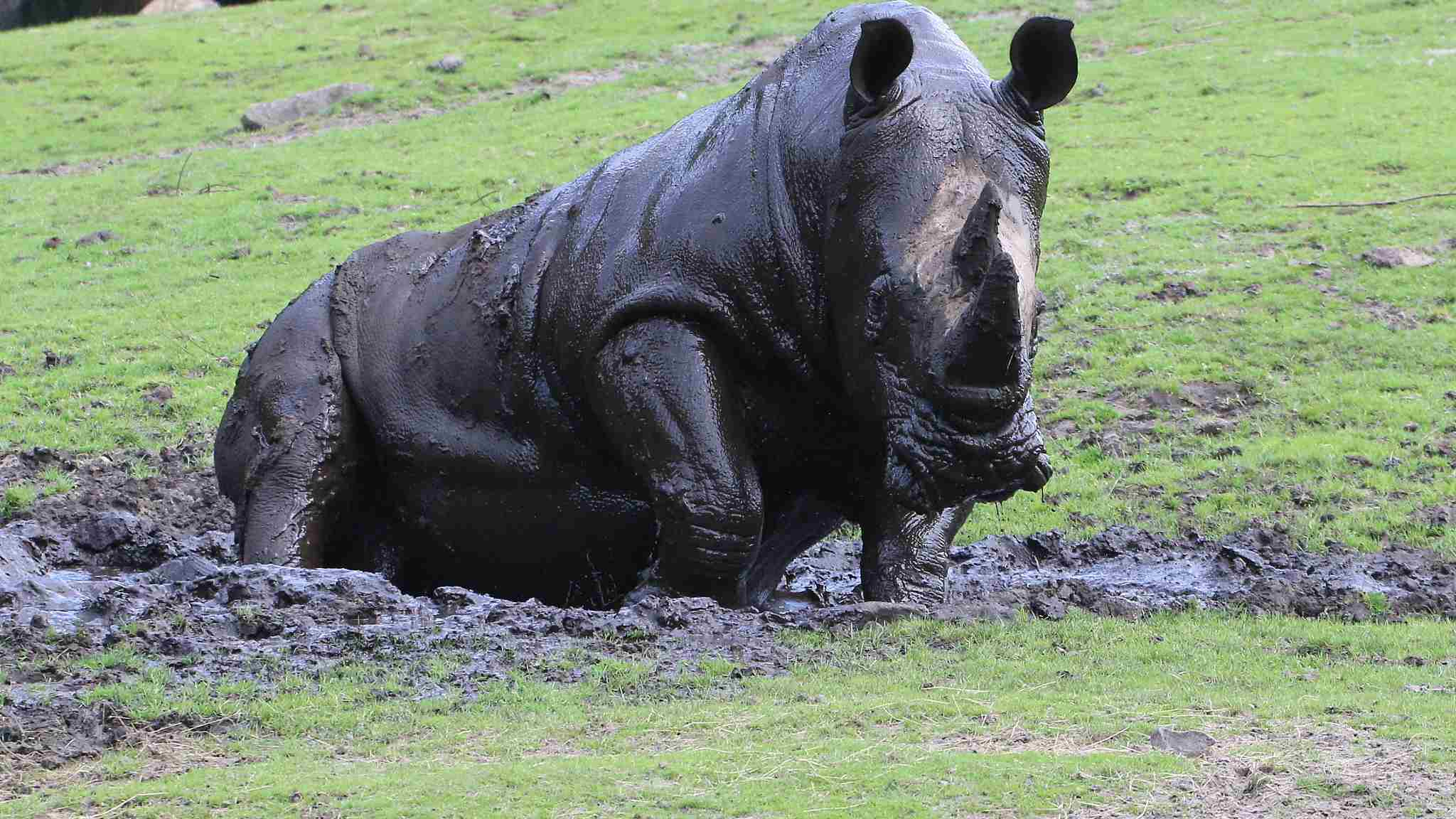
Rhino mud bathing. /VCG Photo
Rhino mud bathing. /VCG Photo
According to the IUCN African Rhino Specialist Group, there are around 20,000 white rhinos living in 2016. At present, the northern white rhinos are close to extinction, with only two female rhinos that have passed the age of giving birth to new calves left as of March 2018.
(Cover photo via VCG)
(If you want to contribute and have specific expertise, please contact us at nature@cgtn.com.)

SITEMAP
Copyright © 2018 CGTN. Beijing ICP prepared NO.16065310-3
Copyright © 2018 CGTN. Beijing ICP prepared NO.16065310-3